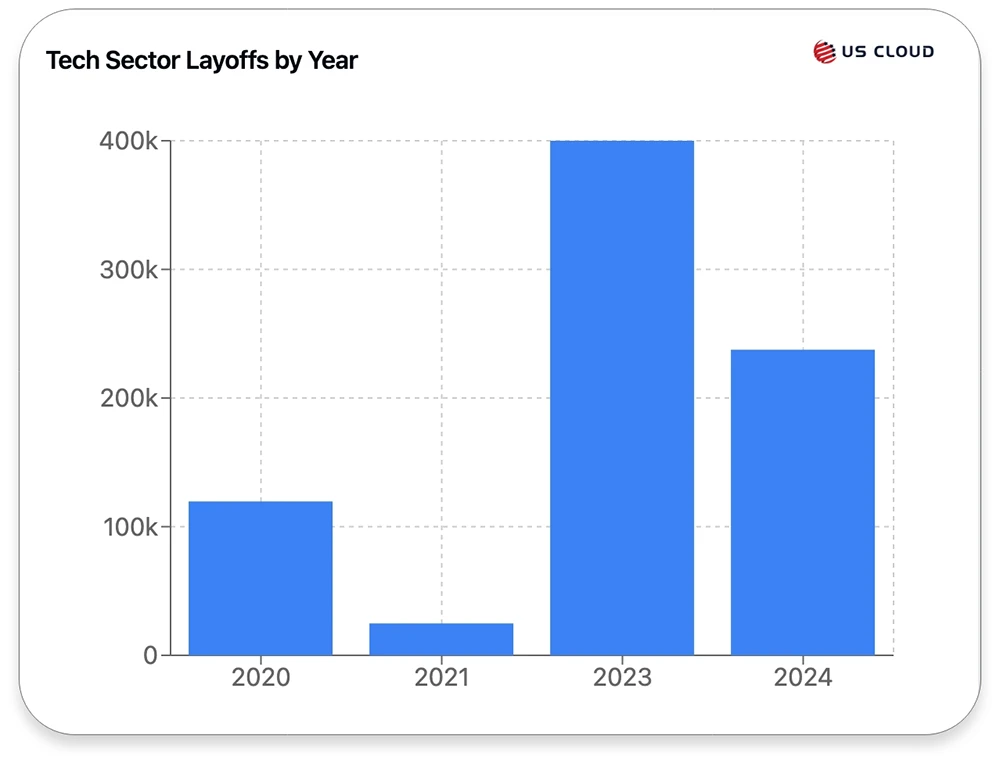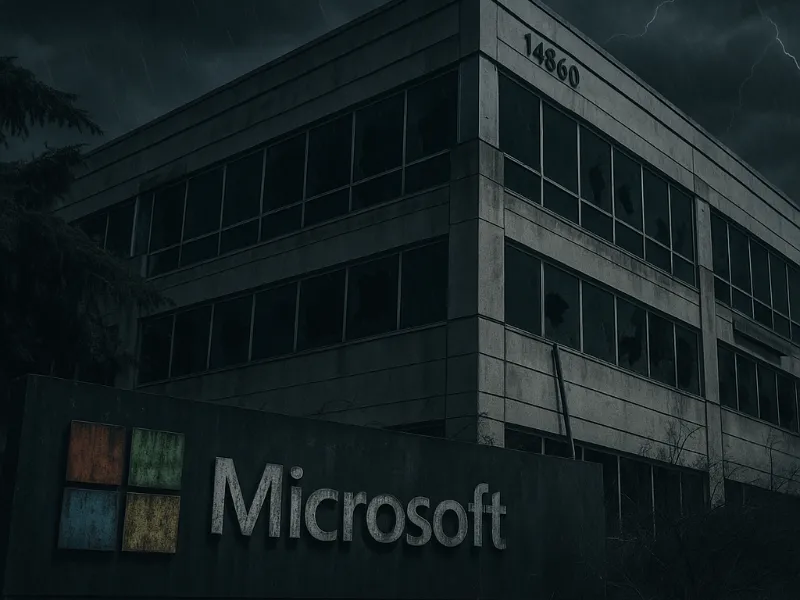30+ Years in the Microsoft Ecosystem: An Insider’s Perspective
I’ve spent my entire career – over 3 decades – working in the Microsoft ecosystem. As a five-time Microsoft MVP and frequent past speaker at Microsoft conferences, I was a die-hard champion of Microsoft’s products, methodologies, and approach. You could say I was a homer (dare I admit, maybe even a shill) for anything Redmond churned out. I believed in the classic American tech ethos of hard work, ingenuity, and yes, a bit of ruthless execution that propelled Microsoft and other giants to the top. From enterprise systems management to cloud innovation, I’ve lived and breathed it. And for a long time, that confidence in Microsoft felt unshakeable. Let me be clear, I don’t intend this blog article, or my opinions within, to be a hit-piece, directed solely at Microsoft. I just happen to know Microsoft better than any of their competitors, and quite frankly, I pay attention to Microsoft news and articles more than other companies. So please, juxtapose that with your own understandings and conclusions.
A Legacy of Trust – Now in Question
Microsoft earned that trust over decades. They did work hard and smart. They built an empire on the idea that “nobody gets fired for choosing Microsoft.” Their software and services became the safe, reliable choice for IT departments worldwide. I’ve seen first-hand how their commitment to customers – from quality products to top-notch support – won over businesses. But lately, I’m seeing cracks in that foundation. The tech industry is undergoing seismic shifts, and even this lifelong Microsoft advocate has concerns. The cause? A perfect storm of mass layoffs, AI hype, and strategic missteps that are undermining product quality, security, and customer confidence.
The Great Tech Layoff Wave and Its Fallout
It’s no secret that tech companies have been swinging the layoff axe with alarming enthusiasm in the last couple of years. Microsoft is no exception. In early 2023, Microsoft cut about 10,000 jobs – roughly 5% of its workforce – in a bid to “recalibrate” after the pandemic boom1. Unfortunately, that was just the beginning. Fast forward a year: another major round of layoffs came in 2024, and yet another in 2025. In July 2025, Microsoft announced it would lay off nearly 4% of its workforce (around 9,000 employees) as it looked to rein in costs amid massive investments in AI infrastructure 2. This followed a May 2024 cut of ~6,000 jobs – meaning Microsoft has repeatedly slashed thousands of roles two years in a row 3.
Microsoft isn’t alone. The entire tech sector saw an unprecedented surge in job cuts. Over 400,000 tech jobs were
eliminated in 2023, the peak of the downsizing
spree4.
 Virtually every big tech firm joined the fray. Google sliced off 12,000 roles, Amazon axed 18,000, Meta/Facebook chopped
over 10,000 across multiple
rounds1.
By early 2023, more than 75,000 tech workers had been shown the door, suggesting broad troubles in the industry (or at
least a herd mentality among its
leaders)1.
And notably, many of those same leaders justified the cuts by pointing to a new focus on efficiency and the next big
thing – AI.
Virtually every big tech firm joined the fray. Google sliced off 12,000 roles, Amazon axed 18,000, Meta/Facebook chopped
over 10,000 across multiple
rounds1.
By early 2023, more than 75,000 tech workers had been shown the door, suggesting broad troubles in the industry (or at
least a herd mentality among its
leaders)1.
And notably, many of those same leaders justified the cuts by pointing to a new focus on efficiency and the next big
thing – AI.
“They’re focused more and more on AI, cloud and next-generation [platforms] and really looking to cut costs… I think they overhired over the years. This is Nadella and team making sure that they’re keeping with efficiency – and that’s the name of the game on Wall Street.” — Dan Ives, Securities Analyst | Wedbush5
Short-Term Pressure vs Long-Term Vision
On the surface, trimming fat in a bloated organization sounds prudent. Indeed, Microsoft’s CEO Satya Nadella himself noted that perhaps “20, 30% of the code” in some new projects was already being generated by software ( AI)3 – implying that fewer human developers might be needed. And as the quote above illustrates, Wall Street has been rewarding companies that show they can lay off with the best of them. Microsoft, for example, sunk tens of billions into AI and cloud data centers, which squeezed their margins2. Cutting jobs is one quick way to pacify the shareholders and fund those hefty investments.
But here’s the rub: mass layoffs may appease investors in the short term, yet they often carry hidden long-term costs. Research from Harvard Business Review has noted that widespread layoffs seldom benefit companies in the long run1. You can’t simply chop away 5–10% of your talent – often the very people who built and maintain complex systems – without repercussions. In Microsoft’s case, the loss of experienced engineers, support staff, and product experts is starting to show up in product quality and customer experience. The “safe choice” vendor is looking a lot less safe lately.
And while nearly every major firm joined the layoff bandwagon, one notable giant abstained: Apple. In fact, Apple remains the only Big Tech company that avoided mass layoffs during this downturn1. How? By not over-hiring in the first place. Over the last four years Apple grew its headcount a modest ~5.6% annually, while Microsoft ballooned by 14% per year in the same period1. Apple’s restraint meant it didn’t have to yank the rug out from under its teams (and customers). Meanwhile, Microsoft’s more aggressive growth – and subseuent cuts – suggest it bit off more than it could chew. The contrast is telling: as Microsoft and others double down on AI as the future, Apple has quietly kept its workforce stable and focused on its core businesses (and, not coincidentally, hasn’t suffered the same PR or support nightmares). I would be remiss to not state the obvious that Apple does have a significantly different user base, and delivers vastly different products than Microsoft - however, tech is tech, and this fact alone may cause ripples towards consumer focused enterprise software that are unforeseen by the oracle’s at Microsoft et al. [pun kinda intended.]
When Layoffs Hit Home: Security and Quality Suffer
So what happens when you show thousands of seasoned employees the door and prioritize “efficiency” above all else? In Microsoft’s case, we’re seeing the real-world fallout, and it’s not pretty. Product quality and security have taken a noticeable hit (have you tried ‘New Outlook’ - lol). Allow me to share a couple of recent examples that should make any IT leader’s blood run cold.
Exploits Left Unpatched (Until It’s Too Late)
Just this month, a serious zero-day vulnerability in Microsoft SharePoint was found being exploited in the wild, allowing attackers to fully access files on SharePoint servers – including data in services like Teams and OneDrive that tie into SharePoint5. How did Microsoft respond? With an emergency fix after attacks were already underway5. It turns out Microsoft was aware of the exploit (a variant of a known issue) and had alerted customers, but as of the initial advisory they hadn’t even developed a patch yet for older supported versions like SharePoint 20165. In other words, businesses and government agencies were sitting ducks while engineers scrambled behind the scenes.
Security researchers noted this particular exploit, dubbed “ToolShell,” was especially nasty – it could potentially bypass future patching efforts and was quickly spreading, with dozens of servers compromised within days5. As one cybersecurity expert warned:
“Anybody who’s got a hosted SharePoint server has got a problem… It’s a significant vulnerability" — Adam Meyers, SVP | CrowdStrike5.
This is exactly the kind of nightmare scenario Microsoft used to pride itself on preventing via proactive hardening and prompt patching [what a concept.] But the reality in 2025 is a more resource-strained Microsoft, laser-focused on its new AI toys, seemingly letting important security hygiene slip. When critical on-premise software that thousands of organizations rely on gets left behind (until headlines force an emergency patch), you have to wonder if its related to AI responsible for working the issue, or recent brain drain and reorgs which left the teams shorthanded and/or distracted.
Patches That Break Instead of Fix
Even when Microsoft does issue patches, we’re seeing more “oops” moments – patches that cause outages or damage. A stark example: in June 2025, Microsoft released what should have been routine Windows security updates. For many users of certain Fujitsu desktop PCs, that Patch Tuesday quickly turned into “brick Wednesday.” Reports emerged that the June 2025 Windows updates bricked many Fujitsu Esprimo machines, leaving them completely unbootable – they wouldn’t even reach BIOS after rebooting6. This is eerily reminiscent [had to lookup how to spell both of those words 🙄] of the late 90’s and early 2000’s when I was ‘cutting my teeth’ in the Microsoft echosystem [🤔 yeah that was on purpose too.] Not a good look, but 20+ years was a hell of a nice ride while it lasted.
The culprit? An update to the UEFI Secure Boot process (specifically the DBX list of revoked bootloaders) went awry and effectively corrupted the firmware on those PCs6. The affected computers froze on the OEM logo screen, with no way to enter setup. In short, Microsoft’s update rendered them dead. The fix, if you can call it that, involved manual intervention – pulling CMOS batteries, disabling TPMs, and risky BIOS recovery routines6. This is the kind of flub that simply didn’t happen at scale in years past. Sure, no software update is perfect, but bricking systems was a rarity. Now it’s reality.
Keep in mind, these patches aren’t happening in a vacuum. When experienced QA engineers and test managers are shown the door, and when remaining teams are pushed to do more with less (and faster), mistakes will happen. A German IT blog documenting the fiasco noted that the Secure Boot DBX update likely overflowed memory allocated for it, implying a lack of proper testing on those hardware models6. Was that because the patch was rushed? Or because institutional knowledge (like which legacy hardware needs special care) walked out the door with layoffs and outsourcing? Either way, it’s Microsoft’s customers left holding the bag – scrambling to recover systems that an official update broke. If that’s not a sign of declining quality control, I don’t know what is.
Offshoring, AI, and the Decline of Expertise
Microsoft’s leadership is not blind (I know many of them personally). They recognize the risks of cutting too deep. Their bet is that new technology – namely artificial intelligence – will fill the gaps left by all those humans they offloaded. In particular, AI is seen as a solution to a long-standing challenge in the tech world: the communication and skill gap of outsourcing and/or offshoring.
The AI Band-Aid for Offshoring Woes
Over the past two decades, Microsoft (like many tech giants) has increasingly relied on offshore teams and outsourced vendors, from engineering to support. This brought cost savings but often at the expense of communication efficiency, cultural alignment, and, frankly, quality. Complex customer requests or software issues can get lost in translation across time zones and language barriers. Anyone who’s had to spell out a problem 6 different ways to an offshore support engineer knows the struggle. Microsoft historically tried to mitigate this with documentation and process, with mixed results.
Enter Generative AI. From Microsoft’s perspective, AI chatbots and code assistants might finally solve that pesky communication breakdown. Need to understand a customer’s support ticket nuance? Let AI summarize and translate it. Need to generate code from a spec written in imperfect English? Let GitHub Copilot have a crack at it. There’s genuine promise here – AI tools can bridge language gaps and even skill gaps to a degree. Microsoft is salivating at the prospect that AI will enable a smaller, cheaper workforce (spread across low-cost locales) to do the job as effectively as a larger, expensive domestic team. It’s a key rationale behind their “all in on AI” strategy: use AI to maintain output even after cutting input (employees).
But here’s the problem they don’t openly talk about: you can patch over a skills gap with AI, but you’re not actually increasing the underlying skill. In many cases, the offshore teams simply aren’t as experienced or deeply skilled as the seasoned engineers and support pros Microsoft once had onshore. An AI assistant can help write boilerplate code or compose a gramatically correct email, but it can’t replicate true architectural expertise or creative problem-solving ( at least not yet). By firing some of the “smart people who got them there” and entrusting more to outsourced staff augmented with AI, Microsoft may have created a new vulnerability – one that can’t be fixed with a quick patch.
“A lot of companies hired people to tell them what to do. We hired people to tell us what to do.” — Steve Jobs7
This reflects Jobs’ belief that talent itself - not patents, products, or brand is the true engine of innovation.
Brain Drain: Cutting the Muscle, Not Just Fat
The effects of this brain drain are becoming apparent. Even Microsoft’s customer support, long a selling point for going
Microsoft, has deteriorated. The support organization has been heavily outsourced and restructured. The result? A slew
of customer complaints about clueless responses, slow resolution, and cultural disconnects. A telling anecdote made the
rounds on Reddit (the sysadmin community has lots of these stories): An IT pro described how every time he opened a
Microsoft support case, he’d request email-only communications, and explicitly write “NO PHONE CALLS” in the ticket.
What would happen? Support reps still called him, repeatedly, often at inconvenient times8.
They simply ignored his stated preference. This really grinds my gears. It, too, has happened to me, on numorus occasions
where I was physically in datacenters with no cell phone access or reception, further delaying the resolution to critical
incidents.
“As someone who has worked in the offshore support team, we are instructed to call on every ticket. The reason given to the techs by the management is that every ticket by default has email selected for the preferred contect method. So one call has to be attempted, at the very least.” — Former Microsoft Offshore Support Team (via Reddit)
In fact, many suspect the support vendors’ managers require engineers to cold-call customers regardless because that’s what their script or culture tells them – even when the customer begs for email. This might sound trivial, but it speaks volumes. It shows a misalignment with customer wishes at a fundamental level. Microsoft’s support has gone from “we’ve got your back” to “we’ll harass you on our terms, not yours.”
“I know for a fact that Microsoft can support their stuff. They just really don’t want to. After the last several rounds of RIFs, they pretty much laid off all the customer-facing support and engineering folks. The best you get these days is an account manager or sales engineer that dodged the bullet during the multiple rounds of layoffs. The only calls I get from them are about how to turn on Copilot and how awesome it would be.” — Former Microsoft Support Engineer (via Reddit)
That snarky comment might be a bit tongue-in-cheek, but there’s truth there. The focus has shifted. Instead of investing in keeping customers happy and successful, Microsoft’s conversations now often veer toward upselling the latest AI features (Copilot, Azure this-or-that) as the cure-all. And with so many veteran support engineers gone, customers with complex issues are left dealing with junior staff reading off scripted solutions (or AI-generated answers) that don’t actually solve the problem. The human touch and deep product knowledge that once justified choosing Microsoft are evaporating. In their place: bots, call center queues, and the standard platitudes we all know too well; “Did you try turning it off and on again?”
Eroding Trust: Privacy and Supportability in the AI Era
There’s another angle to Microsoft’s AI land grab that businesses need to consider: data privacy. When a company pivots to making AI the center of everything, you have to ask “What is that AI being fed?” In many cases, the answer is your data. Your SharePoint documents, your Teams conversations, your usage patterns – all incredibly valuable fuel to train AI models and refine algorithms. Microsoft and other big tech firms are absolutely hungry for this data to maintain AI leadership. And if you’re not paying attention, you might be inadvertently giving it to them.
Let's do a quick thought experiment. "Ask yourself, who else might these companies be sharing this data with, and do you know for what purpose?"
Whose Data Is It, Anyway?
We used to worry mainly about where our data was stored – on US soil or not, within our firewall or in the cloud. Now we must also worry about how our data is used. The fine print in many cloud and software agreements often gives vendors leeway to use anonymized customer data to “improve services,” which is lawyer-speak for training their AI or analytics on your content. Microsoft will tell you that your data in, say, Office 365 is private. And it is – to a point. They won’t publish your documents for the world to see. But they do collect heaps of telemetry. And with the advent of Microsoft 365 Copilot, it’s clear to me Microsoft is scanning and indexing your organizational data to provide AI-driven insights and responses. They promise “your data is your data” and not used to train generalized models – and perhaps that’s true for now – but in my opionion, their future roadmaps will absolutely depend on having broad access to enterprise data to remain competitive. See how both Microsoft (via GitHub Copilot) and OpenAI (via Codex and GPT models) used public GitHub repositories as training data for their code-generation models. I don’t remember getting any noice or ability to opt-out of this and from what I remember even private repos that were briefly public show up in Copilot results9.
Quick aside: Here’s a good article to walk though for those technically inclined, and wanting to ensure privacy Excluding content from GitHub Copilot.
Unless, of course, you pay for privacy. Yes, that’s now a thing. Want to ensure strict compliance and that Microsoft doesn’t use your data for anything beyond serving you? You can do that – by choosing premium tiers and add-ons. For example, Microsoft offers specialized cloud instances for healthcare and government that come at a higher price, and advanced features like Customer Lockbox (which lets you approve or deny Microsoft support access to your content) that are only included in top-shelf subscriptions like Microsoft 365 E5 Compliance. In fact, many of the security and compliance features needed to truly lock down your data require an E5 license or extra purchase10. As one analysis noted, to meet something like strict HIPAA standards with Microsoft 365, “you may need a more expensive subscription, security add-ons, or third-party solutions… Considering that Microsoft 365 E5 costs about $55 per user/month, the necessary features may be cost-prohibitive for large teams.”10 In plain English: Microsoft can keep your data very private – if you open your wallet wide enough.
And it’s not just Microsoft. This is the new norm in big tech: monetize privacy as a feature. Google’s doing it. Facebook (Meta) talks a big game on privacy but would love to squeeze more revenue by offering “privacy-enhanced” versions of its platforms for a fee. It’s disappointing, frankly – we’ve gone from worrying about which data center our info sits in, to now having to negotiate what rights these companies have to mine our data. Courts and end-user license agreements (EULAs) are now the battleground for data privacy. If an AI is involved, you’d better check the fine print on who owns the output, the training data, and the audit logs. Because chances are, unless you explicitly pay for a contract that says otherwise, the house (Big Tech) wins by learning from your data exhaust.
The New Reality: No More “Nobody Gets Fired for Buying Microsoft”
There’s an old saying in IT: “Nobody ever got fired for choosing Microsoft.” It meant that going with the big, established vendor – Microsoft, IBM, etc. – was the safe choice for your career. Even if the project fails, hey, you went with the trusted solution. I’m here to tell you those days are over. In 2025, choosing Microsoft (or any big tech giant) blindly could get you fired, or at least put your organization at risk. Security breaches from unpatched software, downtime from bad updates, productivity hits from poor support, compliance fines from data mishandling – these are the very real dangers when a vendor loses its focus on customer best interests.
Microsoft’s current strategy seems to put all their eggs in the AI basket. AI is exciting, no doubt. It could very well be transformational in the long run. But at what cost? Thus far, the cost has been thousands of jobs cut, products and customers deprioritized, and a whole lot of trust squandered. They are betting the company on the hope that AI can paper over these cracks. Maybe it will, eventually. Or maybe it will just exacerbate them by alienating customers who feel like they’re now just training data or upsell targets.
As businesses, we can’t afford to be complacent. We must be diligent moving forward. It’s time to hold our tech partners to a higher standard – be they Microsoft or anyone else. If your big vendor is too busy chasing the next hype cycle ( while cutting corners on the basics), consider whether a more focused partner could serve you better. Perhaps one that is “smarter, leaner, and built for impact,” to borrow a phrase. In fact, this disillusionment with the tech status quo is exactly why we founded Killer Logic – to help businesses do more with less BS. We’re here to simplify the complex, keep your data yours, and actually support the solutions we build – all the things we wish the big guys would do consistently. (We talk about this in our post on delivering impact with a consultative approach – how a smarter, leaner methodology drives results).
In the end, technology is about making life easier for people and companies. That mission gets lost when corporations start serving their algorithms and shareholders instead of their users. Let’s refocus on what matters: solving real problems, protecting users, and respecting their choices. The companies that do that will win in the long run, AI or not. As someone who’s watched the tech giants for 30 years, I’ll put my money on the ones who remember why they started building tech in the first place – to empower customers, not burn them. And if the old guard won’t do it, then it’s time for a new guard.
FREE CTO Strategy Guide (a $800 value).
We’ll discuss your current goal and/or concern, your underlying tech stack, and provide you with a tangible solution deliverable, offering candid insights on practical solutions to meet those objectives. Whether we build/implement it, you take it elsewhere, or you decide to DIY - it's yours.



